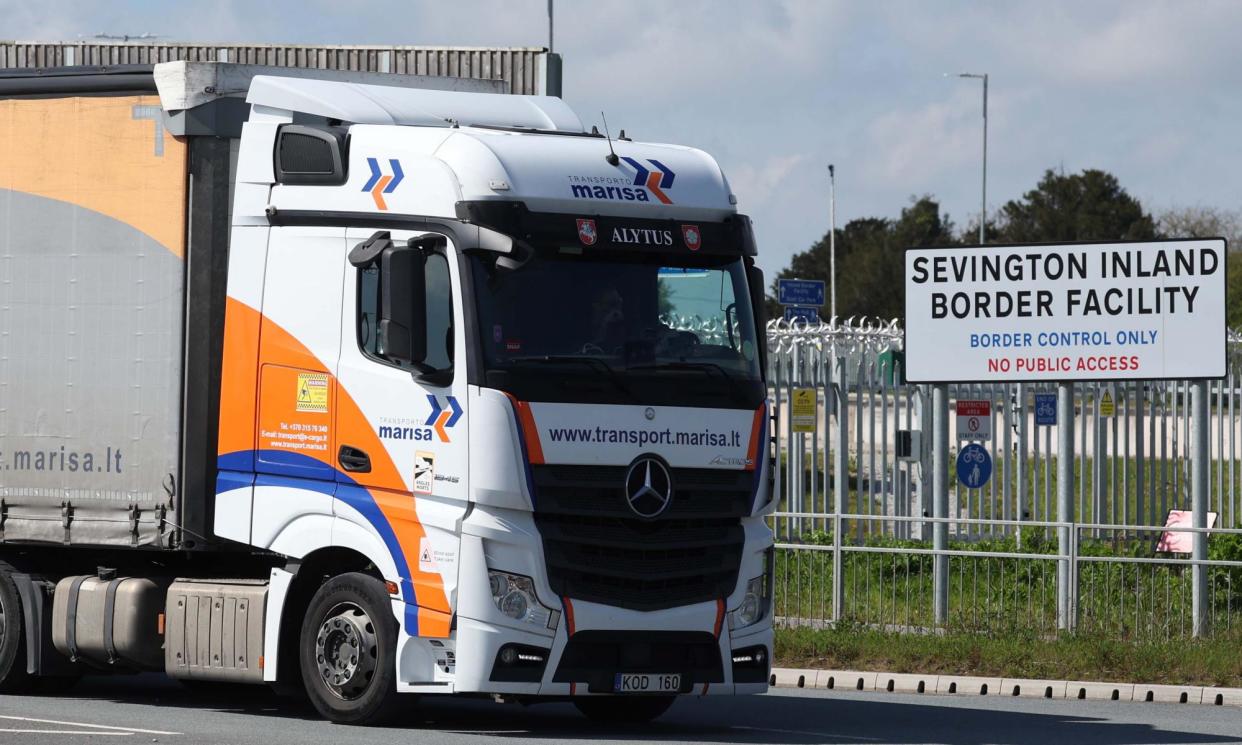How UK’s new border controls will affect animal and plant imports

After more than three years of delays, Tuesday finally sees the introduction of physical checks on animal and plant imports coming into Britain from the EU.
Importers and trade associations have warned that the new bureaucracy could heap significant costs on to importers, resulting in increases to prices on shop shelves.
But what exactly are the new checks coming in, and what impact will they have on businesses and the consumer? Here is a rundown of what to expect.
Related: Ireland reaps €700m Brexit bonanza from customs duties
What are the new checks?
The new regime will mirror checks brought in by the EU when the UK left the single market in January 2021.
They make up the second stage of the government’s Border Target Operating Model (BTOM) plan.
The first phase, which was introduced on 31 January this year, introduced new requirements which meant the majority of meat, dairy and plant products require a health certificate before they can enter the Britain.
The second phase, beginning on Tuesday, will be the most significant, with lorries from the continent being held up for the first time at border control posts at ports around the country, so they can be inspected.
The government has divided all plant and products of animal origin into three risk groups.
The low risk products, which are largely processed food goods, will receive no checks and require no health certificates. The medium risk categories, which include eggs, dairy, meat and cut flowers, and high risk goods, plants for planting and live animals, will all need certificates and be subject to checks.
Will these result in queues at the border?
It is unlikely that we will see long queues in the coming weeks after the government chose to scale back the level of checks due to concerns over disruption.
Initially, it was intended that between 1% and 30% of medium risk goods would be checked, depending on products, while all high-risk products would receive 100% inspections.
However, the Financial Times reported earlier this month that the government would not “turn on” the checks, with checks “set to zero” for all but the highest-risk products.
The government has insisted that there will be checks but has said it would take a more pragmatic approach to checks, compared with its initial plans.
The government will now prioritise the “highest risk” products across risk categories, with checks more “intelligence-led”, and take into account factors such as the country of origin and the company delivering. It will also be adjusted based on compliance of goods and disruption levels.
It then intends to scale these up to full checks in the future but has not given a timeline on when.
William Bain, head of trade policy at the British Chamber of Commerce, said firms face “mounting confusion and uncertainty about exactly how and when the borders checks and costs will be fully implemented”.
Is this the first delay to checks?
Far from it. This is the latest in a long running series of delays, which has seen five other start dates pushed back since 2021.
Initially earmarked to be brought in July 2021, the first three delays were largely because the border control posts, the facilities set up to carry out the checks, were either half finished or not even started.
In April 2022, Brexit opportunities minister, Jacob Rees-Mogg, announced a fresh delay, the fourth, over fears that it would add extra costs to household bills. This was followed by a further delay in October 2023 due to concerns over business readiness and inflation.
How much will it cost business?
The government has estimated that the new border checks will cost businesses and extra £330m a year, and increase food inflation by 0.2% across the three years. A recent Allianz Trade report said it would cost £2bn a year, adding 0.2% to headline inflation.
Earlier this month, the government published its rates for how much it would cost to send goods through the government-run Sevington inland border control post, the Kent facility that will process goods travelling through the Port of Dover and Channel tunnel. This common user charge (CUC) was set at £29 for each type of product, with a £145 cap for mixed consignments.
However, when added with the other additional costs around the new rules, such as the health certificates, port health costs and additional admin costs, it could be much more. The Cold Chain Federation recently calculated that sending five different products through Dover could cost a business £761 in extra costs for each load.
The body estimated that the new requirements could add £1bn a year in costs for those moving plant and animal products through Sevington alone.
Several of the other private border control posts have yet to publish their charges but would probably have similar fees to remain competitive.
Nigel Jenney, the chief executive of the Fresh Produce Consortium, said: “They’ve [the government] created a strategy that is both incompetent and hugely expensive.
“This will drive up costs for our sector, which will ultimately be passed on to consumers already struggling with the rising cost of living.”


